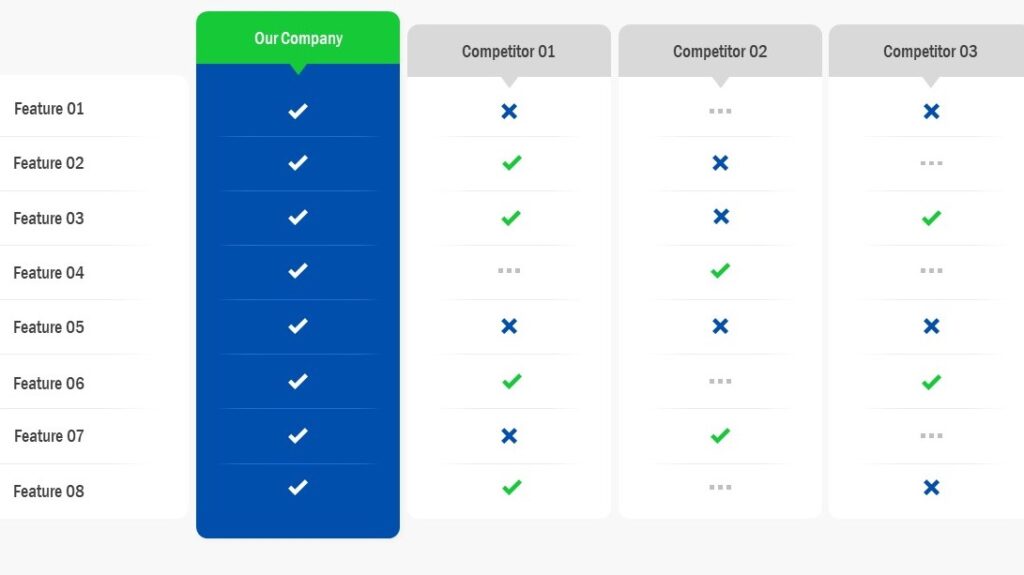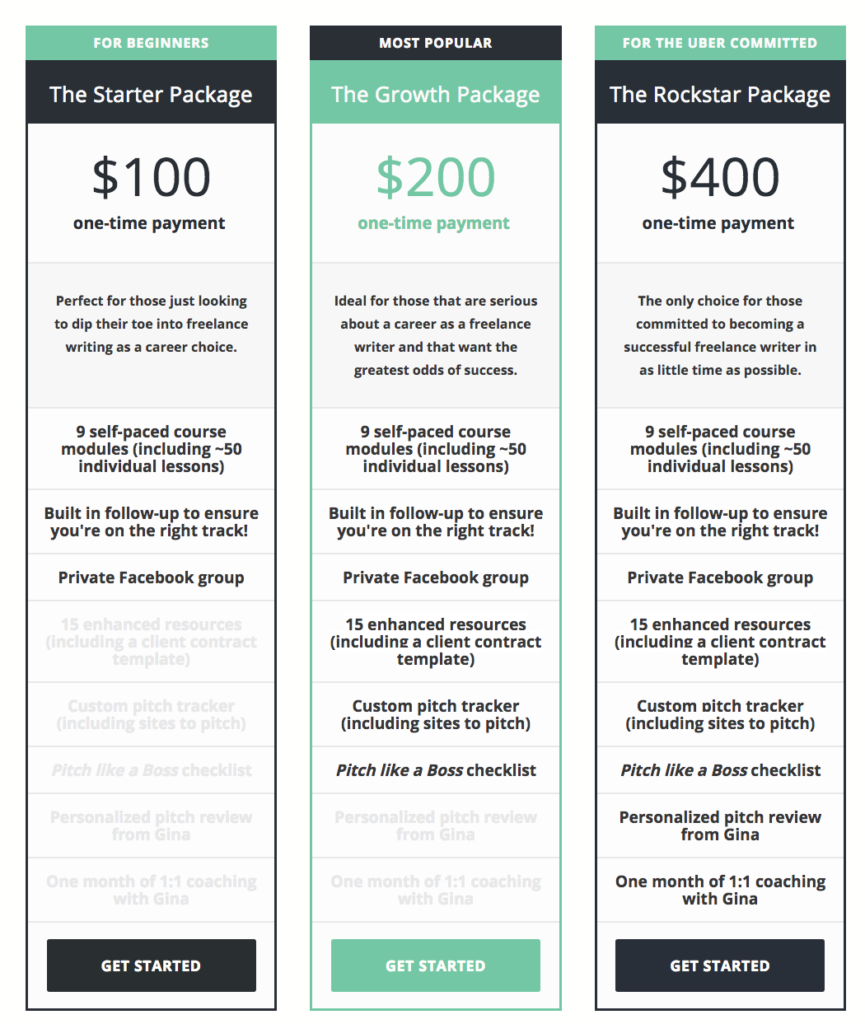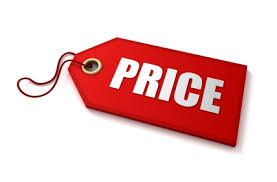Pricing strategy is a hot topic. Knowing how to price a product or service correctly can make a big difference to your sales. Get your prices right and you’ll attract more customers and sell more goods.
But how do you make your prices appear more attractive without having to lower them? After all, we all want to sell more products and make as much profit as possible. Lowering our prices to be lower than our competitors is not always the best strategy.
Here are some pricing strategies and tips that can help you get the edge over your competitors without lowering your prices.
Price is relative
You need to understand that price is relative.
The price your customer is willing to pay for a product is not a decision they make based on the product alone, but by comparing it to other products in the same category.
For example:
Let’s imagine you decide to pop into the supermarket to buy a packet of chocolate biscuits.
As you scan the biscuit aisle you spot the chocolate biscuit section and start looking at the different options available.
The Supermarket’s own brand of chocolate biscuits is £0.80 compared to a pack of Fox’s biscuits at £1.32. Fox’s biscuits contain more chocolate and are your favorite brand, but at more than double the price of the supermarket’s brand, they do not appear to be the best value.
Then you spot the Maryland biscuits at £1.86. Suddenly in comparison to the Maryland’s, the pack of Foxes appears to be good value after all, and you joyfully grab them and place them in your shopping trolley.
People do not evaluate anything in isolation. We always need something to compare anything to in order to evaluate it properly. Comparing one price with another gives us context. In the example above we saw that one packet of biscuits was only considered to be good value when it was compared to another. Otherwise, how would we know whether a price was fair or not?
It’s human nature to compare
Robert Cialdini named comparison as one of his 6 weapons of influence. We are hardwired to compare things, especially when we are making a buying decision.
In order to decide if a price represents good value or not, we have to compare it to something else. We determine whether something is expensive or cheap, good quality or inferior, a bargain or a rip-off by comparing it to other items.
Your customers will be evaluating your pricing and offers by comparing them to what your competitors are offering. If you price your product lower, you need to demonstrate that your product is still as good as your competitors.
But if you want to keep your higher price? When your prices are higher than your competitors you need to demonstrate to your customers that your product offers more value or benefits in comparison.
Use comparison charts to highlight your value
By demonstrating that your product offers more value compared to your competitors, you are taking advantage of your customer’s tendency to compare.
You can use a clear comparison chart to do this.

A comparison chart takes their focus away from price and takes it towards whatever you want them to focus on. This could be features, benefits, USPs, bonuses, review ratings, etc
A comparison chart is a visual representation of your product benefits, features, and USPs in comparison to your competitors. The chart makes the normally long, difficult comparing process, easy.
You are steering them away from comparing on price, and getting them to compare on benefits, features, and value instead. They can clearly see that your product has more features and benefits than the competition, and therefore represents more value.
Now they can see why your price is higher, and they don’t mind because they know what they are getting in exchange for it. When you can demonstrate that your service or product offers more value than your competitors then the buying decision becomes much easier for them to make.
Stop competing on price, and start competing on how much value you can offer your customers. Clearly demonstrate this added value by use of a visual chart and make the comparison easier for your customers.
Tiered pricing strategy
So you have your product and your price is set. We already know that your prospects will compare your product and pricing to your competitors in order to gain an understanding of whether it’s a fair price or not.
How do you get your competitors out of the picture? By making your prospects compare your products with…..more of your own products! Essentially, what you do is create 3 offers or packages around your product line, varying in value and price. Creating additional offers/packages gives your customers more price points to compare before deciding which offer represents the best value for them.
This is known as Tiered Pricing. By presenting your prospects with different packages and price points to consider, you are fulfilling their human tendency to compare. But you are getting them to do it with your own products.
This strategy basically takes your competitors out of the equation. Your prospects will be comparing your own products against themselves, NOT your competitors.
How to use tiered pricing
You should create a budget option, a middle tier option, and a premium option. You see this tactic used a lot by people who sell software packages, subscription options, and consulting services.
Have a look at the example below:

The budget option is priced lower because it offers limited or restricted access to features and benefits, and therefore less use value overall. The middle tier option offers considerably more use value than the lower tier. There is a clear difference – the middle package offers 3 extra features that aren’t included in the basic package. The upper tier or premium option offers only a little extra value compared to the middle option, but it is priced much higher.
The additional features of your highest tier option should be things that will enhance the use of the product but are not essential to use it. In the example above the extra features are not product features but are personal one-to-one support options.
When comparing 3 options such as these, studies have shown that the majority of people will opt for the middle option. This is because it offers more use value than the lower option and represents better cash value than the higher tier option.
In the example above the price difference between the basic and middle options is $100 extra. But the difference between the middle and higher tier options is $200 – double the middle tier price, even though it doesn’t have double the benefits.
What it does offer is two more features in terms of personal support, which some users may attribute a lot of value to if they require it, but in terms of actual product features the middle and higher tiers are the same.
This tier pricing strategy is used in almost every industry from the phone industry to computers, and car manufacturers. Play around with this and test it out.
The best way to get started is to have your product as the middle tier, and then think of things you can add to create more value and charge that as the higher tier option. Likewise, take some features out of your product or offer and set that as your lower tier or entry level option.
Change the comparative environment / who you compete against
Changing who you compete against is a great way to take advantage of consumers’ tendency to evaluate prices in comparison to others.
How do you do this without completely changing your product? You can achieve this by changing the way your product is perceived. Your customers are going to compare your product with other products in the same category or market, right?
By changing the way your product is perceived, you change the competing products your customers will compare yours to.
How to change the way your product is perceived
The most obvious way is to change the appearance or branding of your product so that it does not fit in with the general norm of your product category.
Red Bull is an excellent example of this – a single can cost up to 3 times as much as a can of Coke even though they are essentially both competing in the soft drinks market. A £1.50 can of Red Bull doesn’t seem good value when compared to a 60p can of Coke. When it was first launched people couldn’t believe how expensive it was in comparison to other soft drinks.
In most cases, it was more than double the price of most popular soft drink beverages. But instead of trying to compete on price with other drink brands, they decided to differentiate themselves and change the way they are perceived by customers.
Their strategy was not to focus on promoting their energy drink but to create a brand that embodies a distinct lifestyle and particular audience. They positioned themselves as an energy drink that “gives you wings”, or the energy you need to do whatever you want. Red Bull also uses a smaller can size to differentiate it from the other soft drink brands that typically package their drinks in the same size 330ml cans.
This made them stand out on the shelves and made the product look and appear more appealing. By distinguishing themselves and building a strong brand, they were able to firstly differentiate themselves from other soft drinks, and create a category of their own within the energy drink industry.
People no longer compare Red Bull and other soft drinks or even other energy drinks on price. It has differentiated itself from its competitors so that the high price is no longer an issue. Think about what you can change so that customers perceive you differently.
When they perceive you differently, who they’ll compare you to will also be different.
I’ve seen personal trainers re-brand themselves as “lifestyle and nutritional coaches” and charge a lot more for their services because of this one small change. By branding your products or services differently from the standard category you are able to change the comparative set to which they are compared, and therefore change the way your price is by perceived by customers.
Likewise, when you give people the option to pay for your product in smaller increments (rather than one lump sum), you anchor people on the smaller price.
Offer payments in installments
Suppose that you’re selling a product that costs $499. Your competitor is also selling their product at $499. By offering the option to pay in smaller installments (e.g. 5 payments of $99), you cause two things to happen:
- You change your customer’s perspective of your total price
Breaking down the total price into more manageable smaller payments takes the pain out of making one big payment. People are more easily able to see how they can spread the total cost over a longer period of time.
By breaking down the total payment your customers will be more likely to compare your installment price ($99) to your competitor’s total price (e.g. $499) — a huge difference that makes your offering more appealing.
- You alter their view of your competitors’ prices
People often compare reference prices subconsciously.
This means that although they consciously know that $99 and $499 represent two different things (one is an installment price, and the other is the full price), at the subconscious level they can’t help but think that $99 is much better value.
If your competitors are not offering installment plans it means your prospect will be comparing your installment price with their full price. They’ll be weighing up the benefit of paying in smaller more installments vs paying a large amount outright. They’ll be thinking about how 5 payments of $99 vs paying $500 outright is easier for them to manage.
The smaller installment price also represents a smaller risk. By breaking a large payment down you make it seem like a less risky investment, and your customers will appreciate you for it. It’s a lot easier to commit to a buying decision when the payments are in smaller, more manageable amounts.
Your customers experience less buyers remorse, and your refund rate will decrease as a result.
You don’t have to drop your prices to gain the competitive edge
Using the pricing strategies above will help you gain a significant competitive edge against your competitors. You’ll be able to sell more products without having to lower your prices.
These strategies enable you to change how your prospects perceive your product. Using visual aids like comparison charts can help you compete on the benefits and value you offer instead of the price.
Differentiating your product from the market can help you stand out and change your comparative set (the competitors your prospects compare you to). Making small changes in your branding and positioning can put you into a whole new category or subcategory where your higher prices will be justified and accepted.
The tiered pricing strategy will help you move towards eliminating your competitor from the comparison equation. It also gives you a chance to cater to different customers with varying budgets.
Offering installment plans makes it easier for your prospect to commit to the buying decision. It also makes your price and offer appear to be better value compared to that offered by your competitors if they’re not offering an installment plan.
Use the strategies that best suit your product, service, and the market you are operating in.




